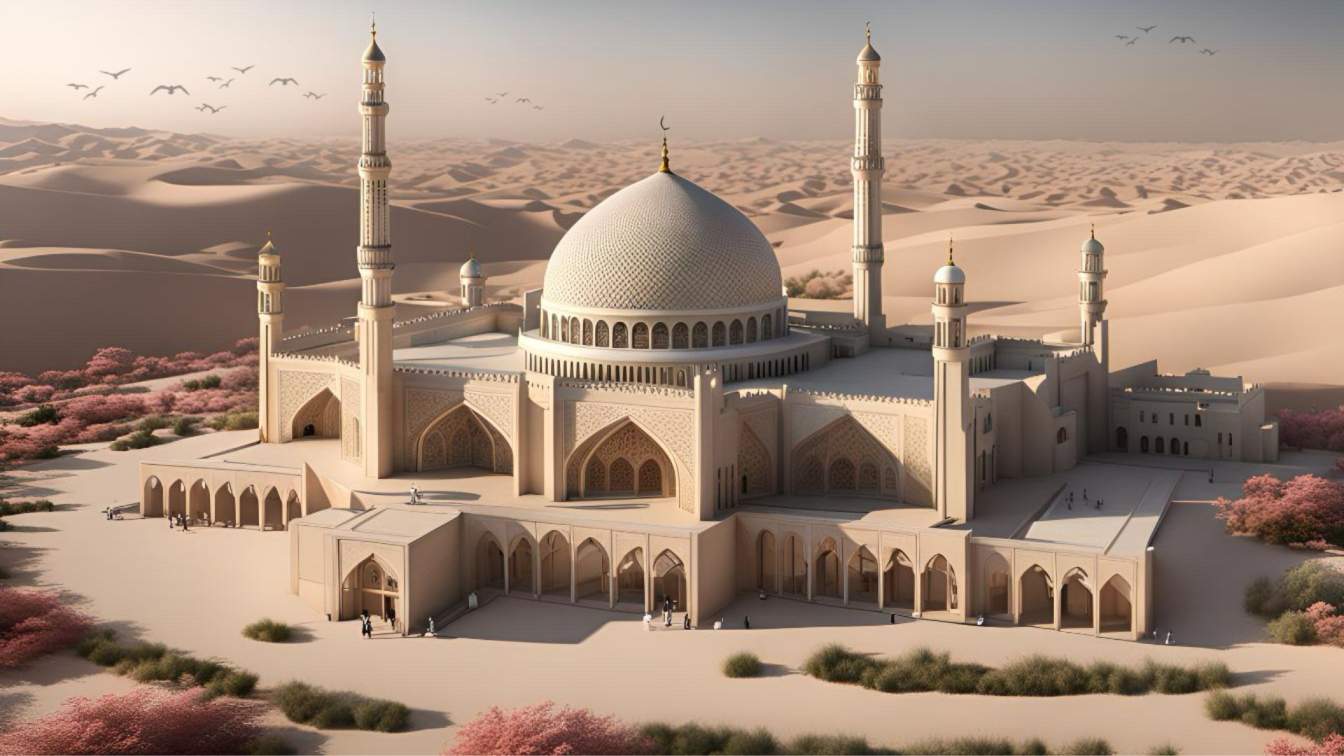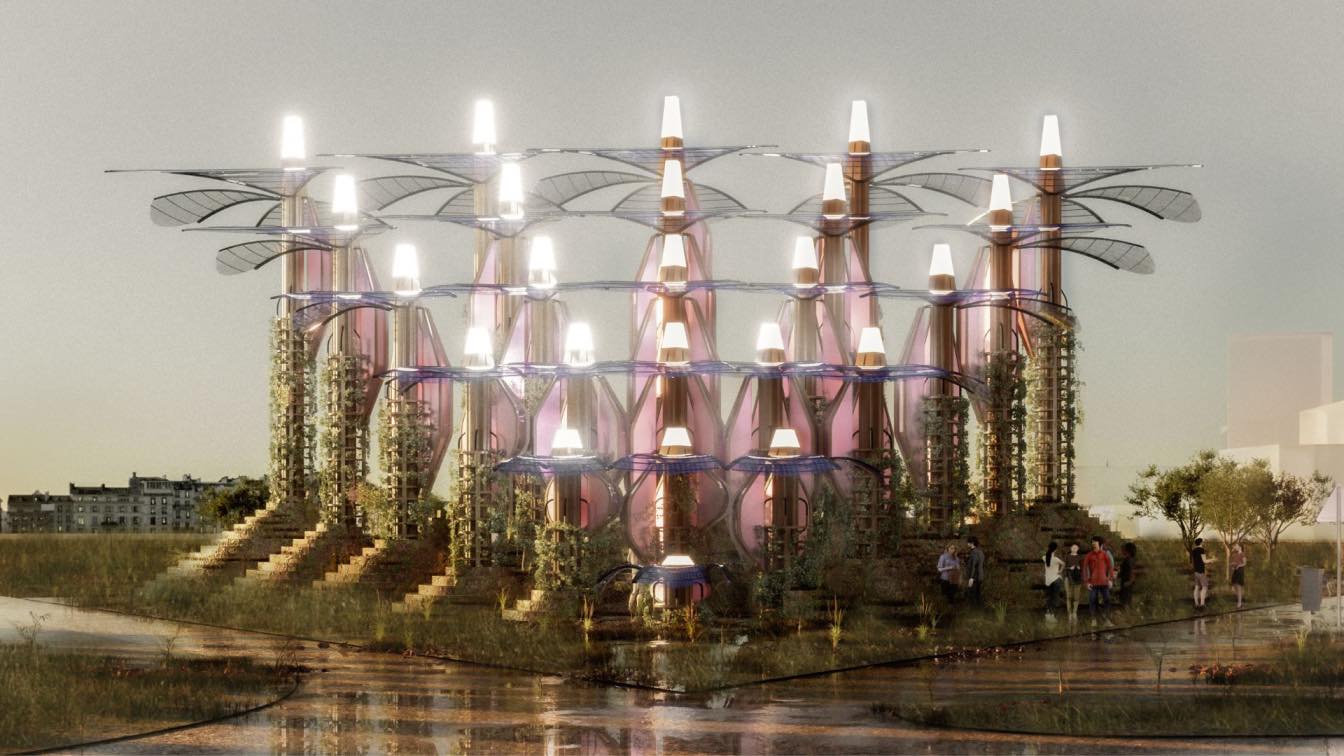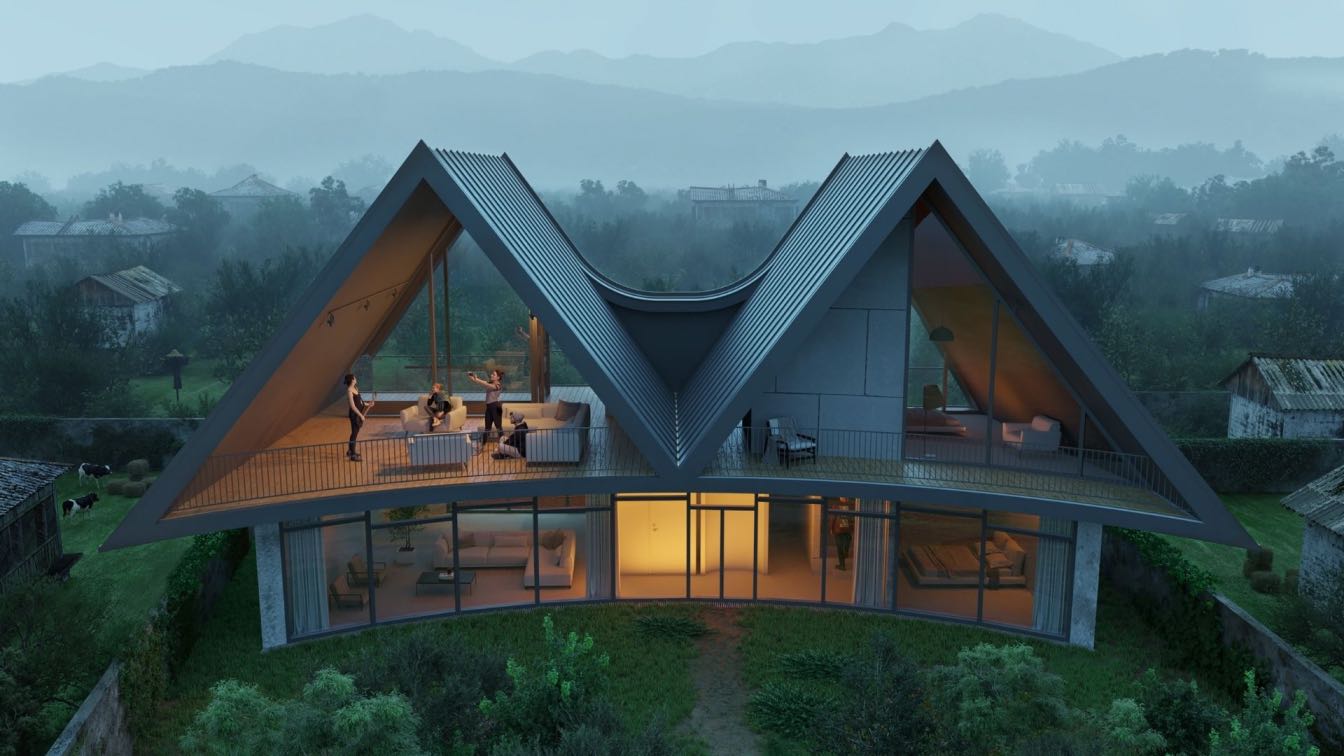Jumanah Muhsen Alqudaihi: Working with the power of artificial intelligence, we have integrated it with our concept and made modifications using other software to generate a realistic output. Welcome to our journey into the Peace Oasis Mosques. It’s a place where Muslims prayers enrich their spirituality and cultivate the soul’s right to love and worship the Creator, Allah. The heart of our design is to present Islamic architecture, with our heritage and identity, as its traditions continue to the present day and into the future.
Despite the development we have achieved. We aim to present the future of buildings and architecture in a simple way, using the existing site to generate a building with less impact on the environment, embracing simplicity, purity, and minimalism at its finest. The Peace Oasis Mosque gives a sense of peace and calm from the harsh desert environment that known in the Arab countries. Some of the key characteristics of Islamic architecture that are presented include forms and decorative elements such as vaulting, arches, mosaic tile, and Arabic calligraphy scripts. When we move on to the major parts of the mosque is presented by merging them together and in the building.
Islamic architecture has fascinated people for ages with its brilliant geometric patterns, soaring domes, and majestic pointed arches. With its vibrant colors, symmetrical forms, and elaborate decorations, this unique art form has irrevocably changed the history of Islamic architecture. Many people, both local and far, have fallen in love with this style. Though Islamic architecture is most frequently linked to Arab states and nations with a majority of Muslims, its impact has extended throughout the world, even to European countries with histories influenced by Islam or the Arab world. Its capacity to cross boundaries and cultural boundaries is, in fact, what gives this style its international appeal.






















